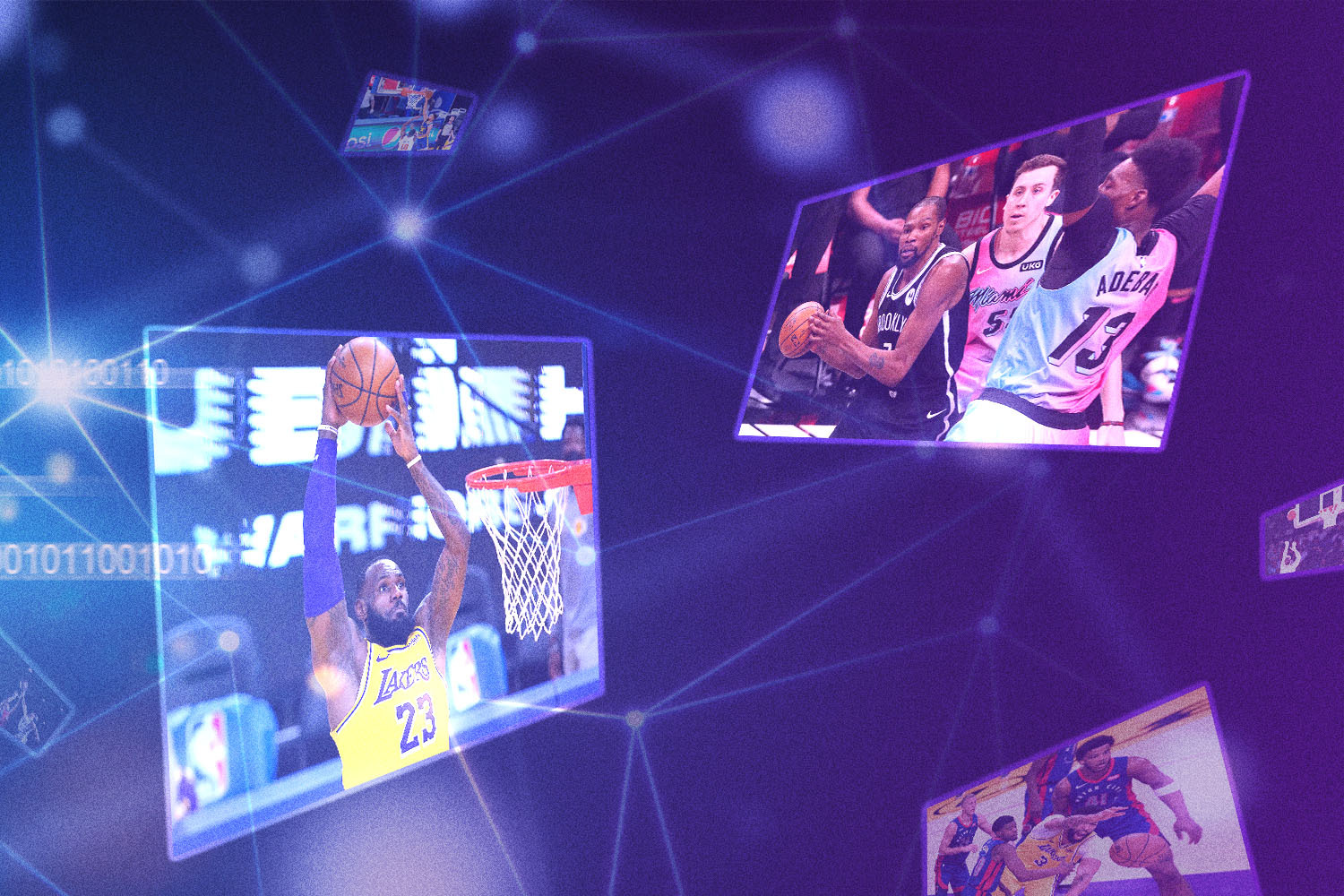We’ve explained NFTs like you were 12 (or like you were us, just as befuddled). We’ve broken down the metaverse into a three-word description.
But can anyone really explain Web 3.0?
Part of the problem is that Web 3.0, or web3 or Web3, is a bit nebulous. Gavin Wood, who helped develop the cryptocurrency Ethereum and currently helps run the Web3 Foundation, coined the term in 2014. It’s loosely the idea of a decentralized online system based on blockchain technology.
Theoretically, there are advantages, as we’ll note below (no monopoly powers holding all your data, more transparency, more rights as a creator, etc.). But not everything associated with Web3 is met with rapturous praise — witness the aforementioned cryptocurrency and NFTs, for example. There’s a lot of greed in these fields, and based on recent returns, a lot more regret.
But the concept of a decentralized online world is probably here to stay — much like the metaverse, everyone is still figuring out what it really is and where it’s going. As one person notes in our roundup, Web3 is basically where the current Web2 internet was in 1998.
“It’s hard to form lasting opinions [on Web 3.0] based on the speculation and what’s happening right now,” admits Christopher Gulczynski, the co-founder and CEO of Niche, a Web3 social media platform (as well as the former co-founder and CCO of Tinder). “But the long tail of this is going to be life-changing. Once the dust has settled, Web3 will change the way we interact online forever, but there will be ups and downs as we get there.”
Below, we spoke with more than a dozen experts in the tech world about exactly what Web3 means and where it’s headed. And the best way to explain it all? Oddly enough, in baseball terms. Read on to see what we mean.
What’s your 30-second (or less) description of Web 3.0?
“Web 3.0 is the next stage of the internet, where users have greater control over their data and digital interactions,” explains Eaven Portillo, Co-Founder and COO of Sortium Blockchain Studio. “It’s powered by blockchain technology, which enables new applications and services that weren’t possible before. With Web 3.0, you can own your data, rather than renting it from centralized platform companies. You can move seamlessly between different digital worlds, or ‘metaverses,’ and experiences. And you can use tokens to pay for goods and services or earn rewards for your contributions. All of this adds up to a more open, decentralized internet that puts users first. It’s the transition of ownership of information control from centralized corporations to individual parties.”
Or, if you’re into fun analogies: “Watching baseball would be considered Web1, playing baseball would be considered Web2 and voting on whether or not we should play/own our own baseball team vs basketball is Web3,” says Vlad Dzhidzhiyeshvili, the CEO of Ventive, a company that makes apps on the blockchain. “Web3 is going to give you a lot more options and control over how you experience the internet (and baseball).”
What are some current examples of Web 3.0?
“Some of the most well-known examples of Web 3.0 right now would be Decentralized Autonomous Organization (DAOs) and NFTs,” says Gulczynski. “Web3 facilitates peer-to-peer interactions without any kind of intermediary, so a good example is cryptocurrency, which cuts out banks as the middleman.”
Besides cryptocurrencies, Portillo points to OpenSea (an online marketplace for NFTs), GoCrypto (“a company that began to bridge the gap between merchants and their customers with crypto and fiat onboarding rails”), Brave (decentralized internet browser), Bored Ape Yacht Club (a popular NFT project) and Axie Infinity (an online game with over two million monthly active users) as good Web3 example.
When does our Web3 future arrive?
“There are already Web3 platforms out there,” says Josh Emison, the co-founder and the CEO of Sansbank, a blockchain-enabled real estate company (he’s also made a YouTube course on explaining blockchain). “We will never have every platform and service 100% blockchain but you will start seeing more of it as the technology being built now starts to become mainstream in 3-5 years. There are companies, like Sansbank, that are building those kinds of technologies into the background but maintaining some Web2 principles to maintain greater user experience.”
“Our Web3 future arrives when native Web3 services are as easy to use as Instagram,” suggests Nate Jaffee, EVP Strategy at Praytell, a creative agency — and also one to use a convenient baseball analogy. “Onboarding new users to do basic stuff like buy an NFT for the first time is still way too complex for the average internet user. But we’re still in the second inning of a nine-inning game — Web3 user adoption today is where the internet was in 1998 or 1999. Given the amount of funding and talent that has poured into the space, I’d optimistically say mainstream adoption for common use cases like tickets, gaming and collectibles, Web3 is only 2-3 years away from being dominant. But we’re likely 5-10 years from seeing more complex things like DAOs replacing traditional organizational structures.”
What are the advantages of Web3 over our current Web2?
“The most significant change is centered around digital property rights, in the form of data and assets,” says JonPaul (JP) Vega, Founder and CEO of Souq, which he describes as “the first portfolio manager for Web3 game assets.” Vega adds: “This more closely resembles the rights available to us in the physical world, allowing for new monetization and innovation in business models. The tragedy of Web2 is that the dominant form of monetization is harvesting human attention for advertisers, incentivizing optimization for screen time and data collection.”
“There is a huge concern right now over censorship online,” adds Emison. “People are creating Web3 social media platforms that can’t be censored and would be accessible to anyone. For example, certain news stories in China were turned into NFTs so the government couldn’t erase them.”
“The technologies Web3 is built on can allow users to take ownership and control of their data and even benefit from added layers of security and encryption, but the impact of Web3 extends even further,” says Casey Null, the Director of Strategy at Wondersauce, a creative agency. It allows users to actually share and participate in the value and influence of companies, brands and communities.”
“In 2004, James Surowiecki published a book called The Wisdom of Crowds — the basic premise is that many non-experts are smarter than a few experts,” says Colin Gounden, CEO of VIA, a blockchain-based Web3 platform for privacy-protected data analysis. “Surowiecki had collected incredible and well-researched examples ranging from guessing the number of jelly beans in a jar at a county fair to locating a lost U.S. Navy submarine. Businesses that are willing to leverage Web3 to harness the wisdom of crowds rather than rely on the expertise of a few are going to benefit the most from Web3.”
What are some concerns about Web3?
“There are some concerns from women and BIPOC creators about a lack of diversity within the web3 space,” says Rylee Armond, a surreal multichain NFT artist and web3 educator who has spoken at events like NFT San Diego Con about finding success as a woman in the web3 industry. “Also, there are some rightful environmental concerns about energy usage. Some blockchains are more efficient than others though, so it is important to be educated about the various options within the crypto space. For example, the Ethereum blockchain uses vastly more energy than the Solana or Polygon blockchains.”
“When it comes to blockchain technology, scalability is one of the biggest concerns,” says Portillo. “Right now, most blockchains can only handle a limited number of transactions per second.” He also mentions rug projects — “crypto assets that are created with little to no real use or value” — that’s already lead to a lot of fraud and scams. And then there’s the lack of anonymity. “Because transactions on a blockchain are public, it’s possible for someone to trace them back to a specific person.”
“Web3 injects money directly into assets like free-to-play games or NFTs, which creates speculative frenzies that feel unhealthy,” adds Jaffee. “ And combined with a lack of regulation, could be very dangerous.”
“The biggest concern is speculation. Some people see the Web3 space as a gold rush and an opportunity to hop on a bandwagon,” says Zaven Nahapetyan, co-founder and CTO of Niche. “They try to inflate the price of online tokens, which leads to bubbles and crashes and hurts the whole ecosystem. It’s not sustainable and it creates a toxic pyramid scheme-like environment that big ‘crypto bros’ benefit from, but the average user doesn’t. It can cause people to lose their savings and ruin lives, and it’s causing people to lose faith in what is actually a really beneficial emerging technology.”
What types of businesses are going to thrive on Web3? What businesses will falter?
“Advertising and marketing, movies and music, and any other content providers would greatly benefit from Web3,” says Dzhidzhiyeshvili. “Businesses and organizations that need or want full control will falter.”
“Every business has the opportunity to thrive in Web3, even my lawn or HVAC guy,” suggests Dr. Gordon Jones, the CEO and co-founder of Thrivacy, a digital identity wallet built on blockchain (Dr. Jones is also an adjunct Professor of Blockchain, Data Privacy and Self-Sovereign Identity at the University of South Carolina and an advisor to several Web3 startups). “For example, they can recreate their work in 3D VR to show their current customers what they are doing and prospective customers their creative capabilities. If Nike can open a store in a virtual mall and allow your avatar to try on a pair of shoes to buy and then let you have a virtual pair to wear while they mail you a physical pair to wear in reality, then any business can figure out ways to sell their wares.”
We’ve seen some environmental issues about blockchain and cryptocurrency, which seem to be central tenets of Web3.0 — how do we mitigate these?
“There’s been significant progress over the past year in moving away from proof-of-work blockchains toward proof-of-stake blockchains, which are far more energy-efficient,” says Jaffee. “The vast majority of clients we’re working with on Web3 projects are very concerned about environmental issues. A year ago, we didn’t have any non-Ethereum options to provide them with and many projects were put on hold. But that’s changed significantly in just a year..”
Elon Musk and Jack Dorsey have basically shrugged off the idea of Web3.0 — are they wrong or do they have a point?
“I don’t think their responses indicate a binary position that Web3 doesn’t exist, but rather that it’s not mainstream, which is a fair critique,” says Perez. “We are still at an early stage of adoption, Web3 is not yet a going concern. As builders in the industry, it’s important we recognize this fact and rally around our responsibility to build experiences that help onboard billions of people.”
“They are pointing out that Web3 doesn’t have a real definition and that it is impossible for the future to be 100% Web3,” adds Emison. “Since Web 3 doesn’t have an exact definition and most companies in the future will live on the spectrum somewhere between Web2 and Web3, there are shady companies and salespeople making money off the ambiguity. Many of these shady companies have received funding for their useless company because it has the Web3 moniker on it. Jack Dorsey and Elon Musk are rightly upset about this. However, Jack Dorsey owns a company that is catering to crypto and Elon Musk’s Space X takes payments in DogeCoin so they aren’t against everything that is happening in the Web3 space.”
“I think they shrug off the branding, not the idea,” says Austin Vance, the CEO of the tech/consultancy firm Focused Labs. “It reminds me of when ‘cloud computing’ started to enter the zeitgeist. When ‘cloud’ became a buzzword, the idea of what the cloud is became opaque, muddied by marketing buzz. Web 3.0, like cloud, is a natural evolution of computing that, to people well steeped in technology, see as just that, and not a bunch of buzz.”
I’ve already noticed the mention of Web4 — what is that?
“Web4 is shapeless mist on a foggy day,” says Emison. “Absolutely no one has any idea what it is and if you squint at it, you can make it out to be whatever you want.”
This article appeared in an InsideHook newsletter. Sign up for free to get more on travel, wellness, style, drinking, and culture.
























